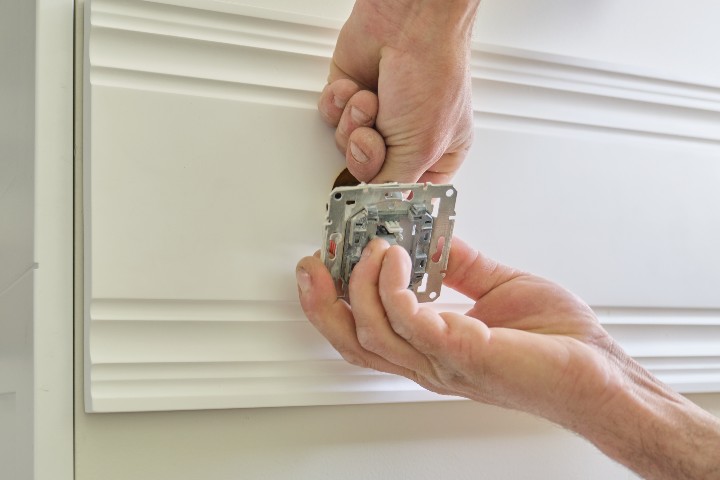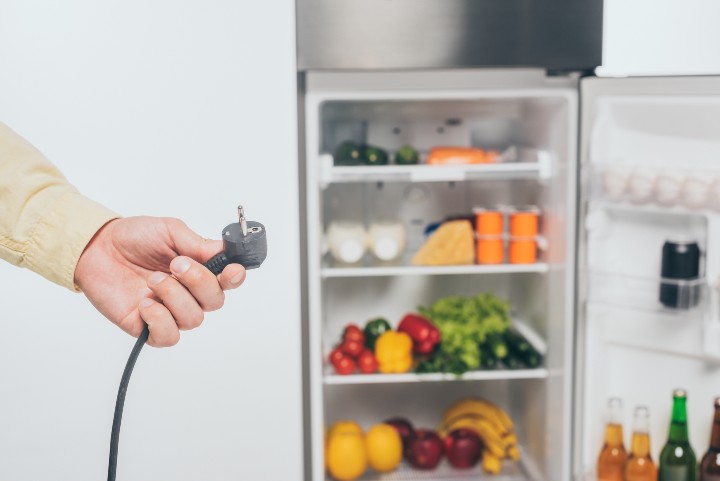Want to share feedback? Contact us.
Have you recently bought a brand new air conditioner for your home that needs a single circuit outlet but you’re confused about what it means?
Before plugging anything and risk tripping your breaker, here’s a quick breakdown.
Here’s What a Single Circuit Outlet Is:
A single circuit outlet is a type of outlet that’s meant to power one appliance at a time. It intentionally has only one socket that’s connected to a separate breaker to prevent power overload and fires. As it’s usually used for appliances that need a huge power load to function.
When Do You Need a Single Circuit Outlet?
You’ll usually need single circuit outlets for large appliances in your home. Like a washing machine, oven range, or air conditioner. As they tend to consume a lot of electricity to run smoothly.
To make sure, inspect your appliances at home to know how much power they consume as it’s usually printed on their labels.
This also serves as a safety precaution, especially in older homes where their wiring system is not updated. If you plug more than one major appliance together in the same outlet, it will have the tendency to overload and trip your breaker.
Worst case scenario, if your breaker keeps tripping, it can eventually cause an electrical fire.
Kitchens with multiple appliances are also recommended to have single circuit outlets. As that’s where major appliances like refrigerators, electric stoves, coffee makers, and microwaves are usually located.
Aside from your refrigerator and electric stove, you might also have a dishwasher, garbage disposal, blender, or toaster. Which will all add up if plugged simultaneously into multiple circuit outlets.
Single circuit outlets are also used for lights and fixtures in your house. As they most likely have the tendency to short-circuit whenever their wires get old.
So in case this happens, you can turn off the breaker, without it affecting the other circuits in your house.

Which Appliances Need to Have a Single Circuit Outlet?
You can usually predict whether an appliance will need a single circuit outlet by looking at how much power it will consume. Look at the watts that are often printed on the appliance itself, or you can look through its manual.
Since most homes have 15 or 20-ampere circuits with 120 volts, you can calculate how much power one circuit can carry by multiplying the two. But for safety reasons, make sure to only use 80% of the power load that the circuit can supply to avoid overload.
Here’s a list of large appliances that usually need a single circuit outlet:
- Dryer
- Furnace
- Refrigerator
- Dishwasher
- Air conditioner
- Washing machine
- Garbage disposal
- Electric oven range
Small appliances that are being plugged together may also have the tendency to trip your breaker. As some can consume a large electrical load. So you might need to plug them into their separate circuit outlets, especially if you use them often.

Here’s a List of Small Appliances That Might Need a Single Circuit Outlet:
- Blender
- Toaster
- Microwave
- Coffee machine
You can also separate your lighting into different circuits so it distributes the power load evenly. This also makes it easier to control the light switches.
How Can You Tell if You Have a Single Circuit Outlet?
You can detect if it’s a single circuit outlet as it should only have one socket to prevent you from plugging in another appliance.
But to make sure, you can look at the breaker box of your house to determine which of the plugs has a single circuit. Each breaker should have its own label to make it easy to tell them apart.
But if for some reason they’re not labeled correctly, you can test manually by turning off all breakers except one. Then test which of your appliances are able to power on.
If multiple devices are able to turn on with only one breaker, then they’re not connected to a single circuit outlet.
You can also tell if it’s a single circuit outlet whenever you turn on 2-3 appliances at the same time and it trips your breaker.
For example, you can run your blender and toaster at the same time, but the power turns off once you also use your microwave.
This means that the circuit can’t handle that much power, that’s why it’s overloading.
So it’s better to separate the microwave into a single circuit outlet to avoid overwhelming your breaker.
It’s also for your safety, as constantly tripping your breaker can eventually cause an electrical fire.
Sources:
The Spruce
How To Look At A House
Early Bird Electricians
